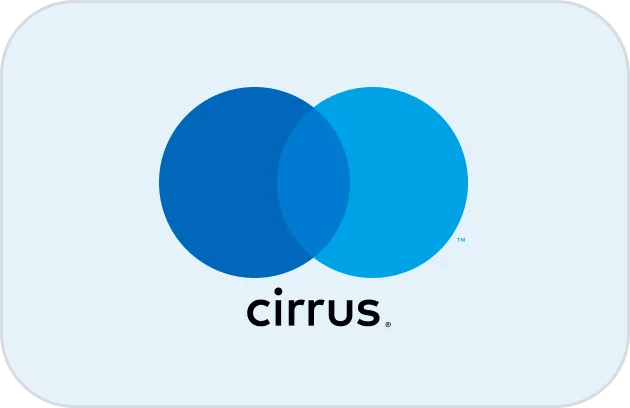You don’t win 2025 by staring at vanity numbers—you win by measuring the few signals that move outcomes. The right metrics prove shorter queues, fewer repeats, higher FCR, compliant outbound, and resilient telephony even under load. This playbook turns metrics into an operating system teams can actually run. It’s built on the same events-first approach used by high-scale platforms that prevent customer loss, connect voice and messaging into a single conversation, and eliminate fragility with designs that survive incidents.
1) The Events Model: Why “One Timeline” Beats 10 Dashboards
Every metric in this guide assumes you have a single source of truth: an events stream that records ConversationStarted, MessageReceived, Routed, Connected, CallbackPromised, CallbackCompleted, Resolved, Escalated, Dispositioned, SurveySubmitted. When metrics derive from the same immutable IDs, your leaders stop arguing about math and start changing systems. That’s the difference between “reports” and permission to act.
In practice, this means three synchronized layers: intraday (interval ASA, Abandon, Adherence), cohort (AHT/FCR/CSAT by intent and channel), and business (revenue/contact, refunds avoided, churn saves). It also means routing and QA draw from the same conversation timeline: when an agent switches from chat to voice, your SLA clock continues—no resets, no hiding queue time in IVR menus. If your platform still behaves like a channel zoo, start here and rebuild your measurement on a conversation graph. For multi-office voice realities, adopt survivable patterns similar to global phone systems without hardware.
2) SLA Truth: How to Define, Capture, and Audit Core Timing Metrics
Service levels collapse when clocks are fuzzy. Define First Response Time (per channel) as “first human or definitive bot action,” not an autoresponder. Define ASA as “time from queue join to agent connect,” not including IVR labyrinths. Track Abandon Rate by interval and by intent—because a flat daily rate can hide spikes that destroy CSAT. For callback experiences, publish Callback Kept daily and aim ≥95% using windowed callbacks that re-queue at the window start.
Compliance isn’t optional: if you operate in the US, your outbound pacing and consent logs must square with current guidance. Study outbound patterns from TCPA-aware predictive dialers and sequence them with compliance guardrails so your contact rate climbs without regulatory landmines.
3) Throughput Without Burnout: The Metrics That Move AHT and FCR Together
The false trade-off is “lower AHT vs. higher FCR.” The mature play is variance control: route by intent, enforce stickiness with time-boxed fallbacks, and replace monolithic scripts with guided steps. Then track AHT distributions (p10—p90), FCR, Handoffs per Resolution, and 7-Day Repeat Rate. Coach with in-moment prompts—verify, empathy, next step, and compliance—so agents move faster while solving correctly. When those four behaviors shift, you’ll see FCR rise as AHT falls.
For outbound, measure Contact Rate, Right-Party Connect (RPC), Attempts per Connect, and Conversion/Connect by window and by list intent. Stop chasing volume; pace by signal. For global teams, local presence and geo-aware routing (patterns generalized from smart local routing) consistently outperform brute force.
4) Quality You Can Calibrate: From Mystery Rubrics to Five Behaviors
Swap 40-point mysteries for a five-behavior, 0–2 scale: Greet/Verify, Discover, Resolve, Next Step, Compliance. Pre-score with AI, but calibrate weekly on the same set of conversations across teams and languages. Tie QA to outcomes, not just politeness: Promised Next Step Created, Outcome Event Logged, Save Closed. When QA, routing, and analytics use the same IDs, leaders finally see which behaviors drive CSAT and revenue/contact. To amplify learning loops, anchor your coaching inside the agent UI with real-time coaching instead of after-the-fact reviews.
5) Reliability and Scale: Edges, Carriers, and the “Non-Event” Outage
Measure telephony like a reliability engineer: MOS, jitter, packet loss, and trunk failover time by region. Publish Incident MTTD/MTTR and run trunk failure drills. Your goal is architectural boringness: incidents become non-events because callbacks keep promises and queues flex with load. For programs spanning North America and EMEA, borrow from the principles behind zero-downtime architectures and an omnichannel design that routes by intent and entitlement—then validates with predictive routing.
If you’re exiting a legacy PBX, track Parallel Traffic Share, Media Quality under Peak, and Cutover Defect Rate. Learn from teams moving off aging stacks—their playbooks echo the lessons in PBX migrations and the telephony evolution in SIP-to-AI transitions.
6) Revenue, Saves, and Cost: Proving the Straight Line
Leaders fund what they can measure. Tie your events model to finance and publish Revenue/Contact, Refunds Avoided, Save Rate, NRR Lift from Proactive Service, and Cost/Contact. Attribute proactive touches to saves (delivery delay comms, payment retry nudges), then compare cohort performance by intent. When you treat metrics like an operating cadence, your board stops asking, “Are the numbers right?” and starts asking, “What do we change next?”
To keep the portfolio holistic, align feature work with ROI evidence. The prioritization habits behind feature ROI rankings and the breadth found in high-leverage integrations help you avoid hobby projects that look cool in demos but don’t move AHT, FCR, or CSAT.
7) The Cadence: Daily, Weekly, Monthly—And Who Owns What
Daily (30 minutes): interval ASA/Abandon, Callback Kept, Adherence, bot handoff health, and two routing/content changes you’ll ship today. Weekly (60): cohort FCR/AHT/CSAT by intent and channel; five-behavior calibration on the same sample; guided-step updates that reduce clicks. Monthly (90): business linkage—saves, refunds avoided, revenue/contact, cost/contact; next-month experiments (max five); retire losers. For region-specific programs (US, Dubai, Philippines, UK, Canada), learn from operational differences described in US scale/compliance, multilingual Dubai volume, Philippine BPO speed, UK GDPR rigor, and Canadian reliability.
| Metric | Definition | Healthy 2025 Range / Action |
|---|---|---|
| ASA (Average Speed of Answer) | Queue join → agent connect (per channel) | Voice: 20–40s; Chat: <30s. If breached, enable callbacks and re-balance queues. |
| Abandon Rate | % contacts that leave before answer | <5–8% overall; monitor by interval/intent to catch spikes. |
| First Response Time (FRT) | Queue time to first real human/definitive bot action | Chat/Msg: <60s; Email: <4h triage. Remove autoresponder masking. |
| AHT (Average Handle Time) | Talk + hold + wrap per conversation | Track distribution p10–p90; reduce variance via guided steps. |
| FCR (First Contact Resolution) | % resolved on first conversation | +8–15% after intent routing + knowledge updates. |
| Transfers per Resolution | Average handoffs until outcome | <1.4; if higher, fix misroutes and entitlement logic. |
| 7-Day Repeat Rate | % customers recontact within 7 days | <12–18% depending on vertical; trigger proactive follow-ups. |
| Callback Offered Rate | % queued offered windowed callback | Offer when ASA>threshold; never as a last resort. |
| Callback Kept | % callbacks completed in promised window | ≥95%; priority re-queue at window start. |
| Containment (Bot) | % intents solved by bot with CSAT parity | 20–40% for repetitive intents with equal-to-human CSAT. |
| Bot Handoff Health | % bot sessions with clean transfer & context | Aim >95%; if low, add exits and pass timeline. |
| CSAT | Customer satisfaction post-interaction | Track by intent/channel; weight by response rate honesty. |
| NPS | Promoter–detractor index | Use for trend, not sprint goals; segment by experience tier. |
| Quality Score (5-behavior) | 0–2 scale on Greet/Verify, Discover, Resolve, Next Step, Compliance | ≥1.6 average; calibrate weekly on same sample. |
| Promise Created | % conversations with explicit next step | ≥90% where applicable; missing promises drive repeats. |
| Promise Kept | % promises completed within SLA | ≥85–92%; alert at missed +24h. |
| Disposition Accuracy | % correct wrap codes vs. QA truth | ≥95%; use summaries to auto-suggest codes. |
| Knowledge Win Rate | % sessions where article/step solved | Grow monthly; retire dead content. |
| Article Freshness | % top intents updated in 30 days | ≥90% for top 20 intents; weekly grooming. |
| Adherence | Scheduled vs. actual by interval | ≥90%; tie to occupancy bands. |
| Occupancy | % on-task time while staffed | 75–85% sweet spot; too high burns, too low wastes. |
| Shrinkage | Non-productive time share | <30% weekly; forecast by program. |
| Service Level | % answered within X seconds | Voice 80/20 common; define per contract. |
| Queue Time Distribution | p50/p90 of wait by interval | Flatten spikes; callbacks near p90. |
| Intent Detection Time | Seconds to identify intent | <10s; triage pod for low-confidence traffic. |
| Misroute Rate | % routed to wrong team first | <6–8%; fix skills and entitlement logic. |
| Stickiness Time | Hold conversation with best agent/team | 10–15 min; fallback to queue of record on breach. |
| Warm Transfer Ratio | % transfers with context passed | Aim >90%; block cold transfers by design. |
| CES (Effort Score) | Perceived effort to resolve | Trend down; tie to click reduction. |
| Clicks per Task | Agent UI interactions for top intents | Remove 2–3 clicks → measurable AHT drop. |
| Revenue/Contact | Attributed revenue per conversation | Trend up with retention/upsell prompts. |
| Refunds Avoided | Refunds deflected by save plays | Show month-over-month gains. |
| Save Rate | % cancels turned into retains | +10–25% with entitlement routing to retention pods. |
| NRR Lift (Service) | Net revenue retention from service plays | Attribute proactive convos to plan right-size. |
| Cost/Contact | Fully loaded cost per conversation | Trend down via deflection + first-time fixes. |
| Proactive Deflection | % contacts prevented via signals | 25–45% inbound reduction during incidents. |
| Survey Response Rate | % sessions with valid CSAT/NPS | Avoid survey spam; sample fairly by intent. |
| Anomaly Alerts | Auto flags: sentiment, repeats, AHT drift | Triage daily; ship two fixes weekly. |
| Escalation Rate | % sessions requiring supervisor | Trend down with better guided steps. |
| Backlog Health | Open by intent/channel vs. capacity | Publish intraday; act on thresholds. |
| Forecast Accuracy | Volume prediction vs. actual | Improve with seasonal and promo signals. |
| Interval Staffing Fit | Staff vs. load each interval | Tie adherence to fit; reduce overtime spikes. |
| Agent Attrition Risk | Leading indicators per cohort | Address with coaching + load fairness. |
| Training Time to Competency | Days to reach target AHT/FCR | Shrink with guided steps + sandbox practice. |
| Wrap Accuracy | Notes completeness vs. QA truth | Use summaries; audit weekly. |
| Compliance Incidents | Recording, identity, consent breaches | Drive to zero via defaults and redaction. |
| Data Residency Conformance | % flows meeting region rules | Audit quarterly; pin data paths. |
| MOS (Voice Quality) | Mean opinion score by edge | ≥4.0; auto-reroute when degrading. |
| Trunk Failover Time | Seconds to move traffic on failure | <10s; drill monthly. |
| MTTD / MTTR | Detect/resolve incident speed | Drive down with synthetic monitors and runbooks. |
| RPC (Outbound) | % right-party connects | Lift with local presence + signal pacing. |
| Contact Rate (Outbound) | % dials yielding a conversation | Optimize windows; respect consent and DNC. |
| Conversion/Connect | % connects becoming desired outcome | Coach to guided offers; track by list/intent. |
| Attempts per Connect | Dials needed for one connect | Cap attempts; change strategy, not brute force. |
| Feature Adoption Lift | % using key features after guidance | Tie to onboarding; correlate with repeats drop. |
| ROI per Feature | AHT/FCR/CSAT gain vs. build cost | Rank work by ROI; see features by ROI playbooks. |
FAQs — Short Answers That Change Outcomes
1) What’s the minimum metric set to run weekly?
2) How do we raise FCR without bloating AHT?
3) What’s a credible bot target for 2025?
4) Which reliability metrics should execs see?
5) How do we sequence features by ROI?
6) What outbound measures prove “compliant + effective”?
7) How do we link metrics to saves and revenue?
Metrics only matter if they change what you ship this week. Use this 50-signal spine to steer routing, QA, outbound pacing, and reliability. For industry-specific stacks, mine real patterns from healthcare, banking, and e-commerce use cases; when telephony is the constraint, apply lessons from cost-cutting PBX/VoIP setups, global VoIP toolchains, and region-fit builds like Singapore cloud PBX.
If your inbound is healthy but growth leans on outbound, compare platforms and pacing via auto dialer tool benchmarks, what happens when manual dialing dies, and how predictive strategies turn idle time into pipeline. And when QA becomes the bottleneck, study how AI-first auditing drives 100% coverage without losing the human signal. The result is simple: fewer repeats, faster resolutions, calmer queues, proof of revenue impact—and a team that wins on purpose.
Building region-fit pages? See how multi-office Australia VoIP patterns reduce outages, how US call centers balance scale and compliance, why Dubai programs master multilingual load, what Philippine BPOs do to keep SLA honest, and how UK teams harden GDPR-first operations. When buyers ask for a call center software solution that actually moves numbers, hand them your metrics pack and your cadence—and let the results speak.








